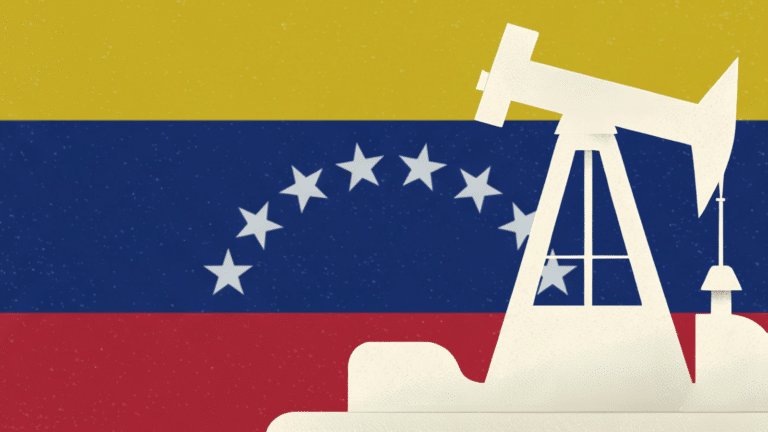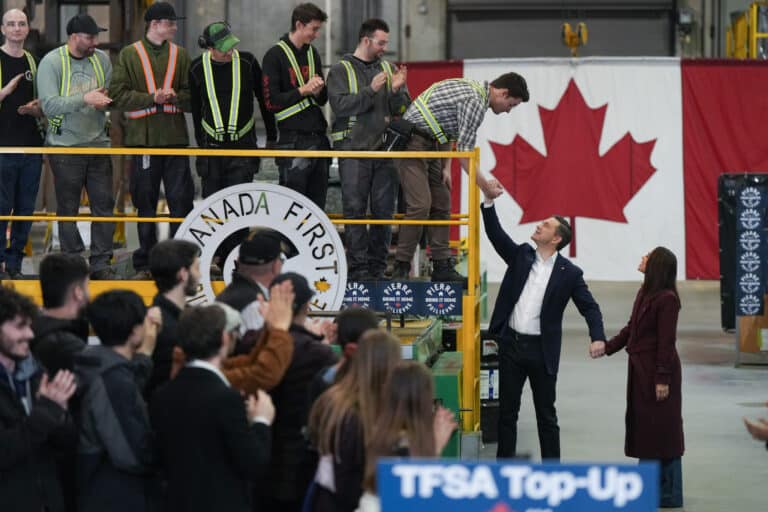China Halts U.S. LNG Imports Amid Tariff War
China has ceased importing liquefied natural gas from the United States since early February, as the ongoing tariff war impacts energy trade.
Current Access Level “I” – ID Only: CUID holders, alumni, and approved guests only
Insights from the Center on Global Energy Policy

This Energy Explained post represents the research and views of the author. It does not necessarily represent the views of the Center on Global Energy Policy. The piece may be subject to further revision. Contributions to SIPA for the benefit of CGEP are general use gifts, which gives the Center discretion in how it allocates these funds. Rare cases of sponsored projects are clearly indicated.
For a full list of financial supporters of the Center on Global Energy Policy at Columbia University SIPA, please visit our website at Our Partners. See below a list of members that are currently in CGEP’s Visionary Circle. This list is updated periodically.
The Trump administration’s decision on April 2nd to impose sweeping tariffs on most of the planet is already having significant effects on industries, companies, and individual citizens. In the natural, initial rush to report on the immediate damage done, the impact on US economic statecraft has reasonably been set aside. But the ramifications of the maneuver for US economic power projection will be seismic and systemic, limiting the ability of the United States to advance its interests using economic means in the long term.
The United States has long been able to use economic levers of power to address a range of legitimate national security concerns. Through sanctions and other forms of economic coercion, the United States has made it harder for terrorists and narcotics traffickers to operate, impeded weapons of mass destruction and missile proliferation, and imposed consequences on human rights violators, corrupt officials, and hostile governments the world over. These efforts worked for two reasons: first, the targets of US coercion were often seen as standing against international rules and norms; and, second, doing business in the United States was far more important than any limited benefits from pushing back on US demands.
The United States remains one of the world’s most important economies. The Trump administration’s tariffs will increase the cost of doing business with the United States and has already triggered foreign retaliation. Still, business with the United States will not end tomorrow. Companies still want access to US markets, just as banks want access to US financial services, and people around the world want access to US products.
This also means that governments, companies, and banks will take decisions necessary to ensure their continued access to US economic actors. In consequence, in the immediate term, the United States will continue to be able to engage in economic coercion. There may be exceptions, especially with the most significant players. China, the EU, and other big economic actors face a choice about how far to push back on the United States and whether their reaction will also involve rejection of non-tariff-related demands (e.g., whether to support US maximum pressure sanctions against Iran).
But the economic downsides of not cooperating with US foreign policy demands will likely diminish as a result of this decision. If the benefits of doing business in the United States are less than before the tariffs, this naturally informs the evaluation of whether to absorb the cost of compliance. Every bank, every company, and every country will assess the costs and benefits of conceding to US demands. It is too difficult to tell, at this point, how much a tariff increase of 10 to 20 percent might affect this decision-making, especially since the terms of the tariffs still seem to be in flux.
Moreover, this calculus now has a political dimension as well. The Trump administration’s tariff decision has damaged global markets. This will affect real people in real countries with real political leaders. In many jurisdictions, the imperative of US economic and political support may outweigh any political risks faced by national leaders. The government involved will probably try to work out an amicable solution with the United States, especially given President Trump’s previous willingness to negotiate on tariffs on Canada and Mexico. In others, the demands being imposed by the United States may prove too much, especially if freighted with other US demands or if the government involved is convinced it will face US economic coercion no matter what it does.
We are already starting to see this play out, with each country navigating its own domestic requirements and international relations. China’s approach has been to retaliate with its own substantial tariffs and move to source agricultural goods from outside the United States. The EU has floated a proposal for retaliation against the United States that will be voted on soon. Other countries, such as Japan, have stated that they do not intend to retaliate and lack options to do so but will instead seek negotiations with the United States. Still, as Canadian Prime Minister Carney said, “It is possible that with comprehensive negotiations, we could reestablish an element of confidence but there will be no going backwards.”
Should the tariffs remain in place across large swathes of the globe, especially in combination with aggressive US sanctions, the long-term damage to the efficacy of US economic coercion could be far more substantial. Four factors explain this conclusion:
The tariff announcements, their confusing rollout, and their capricious selection of targets have already caused much damage. Choosing to impose higher tariffs on the EU than Russia, for example, will make it harder for the United States to convince the EU to absorb future economic costs or risks that may be necessary to target other malign actors identified by the United States. Similarly, choosing to pile on China or Malaysia may undermine the attempt to secure these countries’ continued cooperation over Iran oil exports.
But the US economy remains attractive, if tarnished, due to its size and significance. The US government could take three steps if it wants to repair the damage:
The Trump administration has demonstrated that, on economic grounds at least, it wants the United States to abandon any pretense of or costs associated with exceptionality. It would do well to remember the benefits of its economic exceptionality, not least in terms of the ability of the United States to exert its will in addressing actual threats to its national security interests.
CGEP’s Visionary Circle
Corporate Partnerships
Occidental Petroleum
Tellurian
Foundations and Individual Donors
Anonymous
Anonymous
Aphorism Foundation
the bedari collective
Children’s Investment Fund Foundation
David Leuschen
Mike and Soa Segal
Kimberly and Scott Sheffield
Bernard and Anne Spitzer Charitable Trust
Ray Rothrock
This Energy Explained post represents the research and views of the author. It does not necessarily represent the views of the Center on Global Energy Policy. The piece...

This Energy Explained post represents the research and views of the author. It does not necessarily represent the views of the Center on Global Energy Policy. The piece...

This Energy Explained post represents the research and views of the author. It does not necessarily represent the views of the Center on Global Energy Policy. The piece...

This Energy Explained post represents the research and views of the author. It does not necessarily represent the views of the Center on Global Energy Policy. The piece...

Pitting Western Canada against Eastern Canada is a terrible strategy for winning Trump’s trade war

The world’s reserve currency may not survive the weaponization of U.S. economic power.

A former deputy treasury secretary and a presidential economic adviser on the need to draw a sharper line between open economies and the rest | By Invitation
